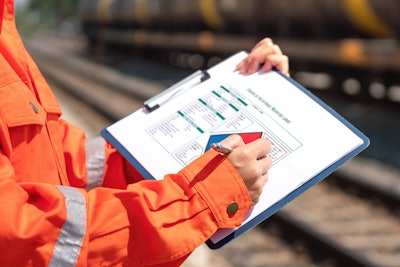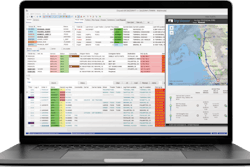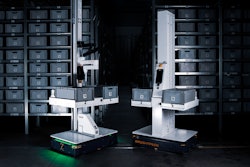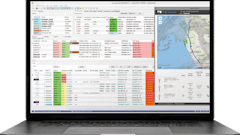
The modern supply chain — defined by global interconnectedness, expanding product portfolios, and relentless market volatility — faces a growing crisis: the rise of excess and obsolete (E&O) inventory. This is more than an operational inefficiency; it’s a financial and sustainability challenge. As inventory ages or expires, it locks up working capital, drives costly write-offs, and systematically erodes margins. In today’s economy, resilience, profitability, and measurable environmental, social, and governance (ESG) performance have become a single mandate.
Yet the systems built to manage this complexity were designed for reporting, not accountability. Dashboards and alerts show what happened — after it happens. They depend on people to interpret data, align functions, and act, creating “siloed accountability” that slows response and allows waste to accumulate.
Constrained by slow reporting and manual triage, traditional methods expand human workload instead of enabling intelligent action — leaving three critical gaps unresolved:
● Lack of real-time visibility: Emerging risks such as forecast mismatches or aging inventory thresholds often go undetected until it’s too late for intervention
● Static logic: Fixed thresholds can’t adapt to volatility in seasonality, demand, or lead times
● Siloed accountability: Mitigation steps, like stock transfers or demand throttling, require cross-functional coordination that often falls through the cracks
Taken together, these gaps define a system that only reports the past; the mandate now is decision accountability — embedding intelligence that proactively executes what needs to be done before waste occurs.
Meeting this mandate requires smarter, faster decisions. This is where AI is making its greatest impact.
Decision intelligence: From insight to accountability
From demand sensing to dynamic routing, new advances in AI are already transforming supply chains. But the real breakthrough comes from decision intelligence, a specific application of AI that connects data, analytics, and automation to not only inform decisions but also execute them.
Decision intelligence turns insight into accountability. It continuously monitors supply and demand signals, detects risks before they materialize, and recommends — or even executes — the best course of action. This represents a fundamental shift from reporting on what happened to ensuring what happens next, where systems proactively trigger the right actions at the right time.
By combining human expertise with machine-driven speed and precision, organizations can move from reactive firefighting to proactive control — mitigating waste before it has a chance to accumulate unchecked. The result is reduced waste, improved performance, and more adaptive, sustainable supply chains.
At its core, decision intelligence acts as a continuously learning and adaptive system, bridging human judgment with automated execution. It moves beyond generating insights to making and executing decisions in real time, continuously learning from every outcome to improve the next one.
At the heart of this evolution is a new way of working. It doesn’t replace people; it empowers them to focus on strategy and innovation while ensuring that routine, data-driven actions are carried out with accuracy and speed. Instead of manually analyzing data and reconciling reports, business experts design and oversee automated decision flows that manage complex risks such as excess and obsolete inventory — before they escalate.
This shift transforms teams from reactive problem-solvers into architects of intelligent, self-improving systems that actively prevent waste and protect value. This evolution marks a decisive step toward closing the gap between visibility and action and achieving measurable progress toward zero waste.
Preventing supply chain loss through intelligent, automated decisions
Decision intelligence provides a closed-loop framework for waste and loss prevention, continuously connecting data, intelligence, and action to ensure every E&O risk is identified and addressed before it becomes costly.
It begins by unifying planning, demand, supply, shelf-life, and financial data into a complete, end-to-end view of inventory risk. Intelligent detection models monitor this data in real time, surfacing early signals such as slowing velocity or approaching expiry dates. Based on these insights, the system recommends the best corrective actions, whether that means rebalancing inventory, repurposing materials, or redirecting stock to higher-demand channels.
Once approved, these decisions can be executed directly within enterprise systems, closing the gap between insight and operational action. Every outcome is then captured and fed back into the model, creating a continuous learning cycle that improves speed, accuracy, and foresight over time.
The result is a supply chain that doesn’t just respond to loss — it prevents it. Decision intelligence transforms E&O management from reactive mitigation to proactive, intelligent prevention, protecting both profitability and sustainability goals.
The ROI of waste prevention: Quantifiable results
By operationalizing decision intelligence, global enterprises are achieving verifiable gains that simultaneously boost the bottom line and advance sustainability metrics, including a reported waste reduction of up to 20% across supply chains. This dual impact proves that efficiency and environmental responsibility are mutually reinforcing.
Decision Intelligence can also optimize logistics by integrating CO₂ emissions management directly into logistics planning and execution. This ensures that maximizing truck utilization — a financial objective — also supports an environmental one, reducing transportation emissions and eliminating unnecessary shipments.
The KPIs below illustrate the range of real-world impact organizations report when integrating decision intelligence into their supply chains — spanning working-capital release, measurable Scope 3 reductions, and significant efficiency gains.
To make these gains repeatable at scale, organizations must codify decision guardrails, roles, and closed-loop workflows so automated actions are governed, measurable, and consistent across the enterprise. In practice, that means standardizing ownership and escalation paths, embedding audit trails and performance thresholds directly in the systems that execute decisions, and reviewing KPIs on a set cadence to tune models and policies as conditions change.
Establishing decision accountability
The inflection point has arrived. Decision intelligence is becoming the foundation for the resilient, zero-waste supply chain of the future. This shift calls for senior leaders to evolve from managing reports to architecting action, defining the parameters, guardrails, and goals that guide intelligent, automated decisions across the enterprise.
By translating institutional knowledge into scalable, data-driven decision flows, organizations can ensure that expertise drives lasting strategic impact. The result is a decisive move from the costly limitations of retrospective reporting to the compounding value of real-time, system-enforced accountability — where every decision advances both operational performance and sustainability goals.


















